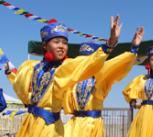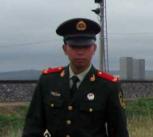Creating a shared resource for the endangered culture of the Kalmyks
21 September 2014Almost four centuries ago, ancestors of the Kalmyk people trekked across central Asia to form a Buddhist nation on the edge of Europe. Today Kalmyk communities are scattered across Eurasia, with the largest group in the Republic of Kalmykia.
A new project will document Kalmyk heritage to produce an open-access online resource to help Kalmyk communities revive their culture.



